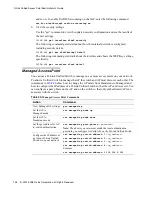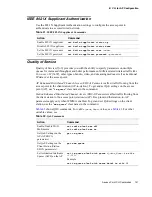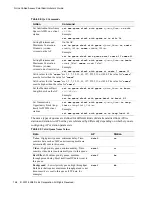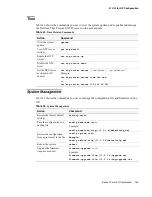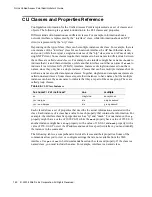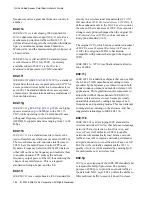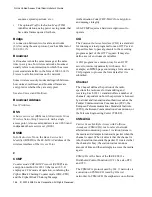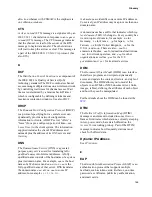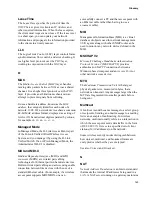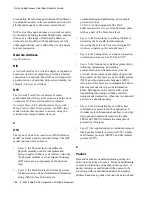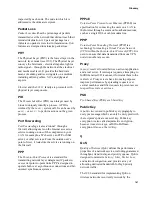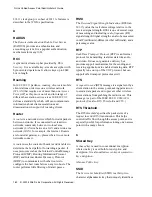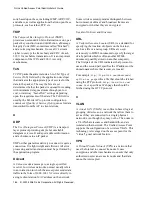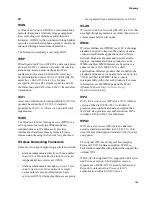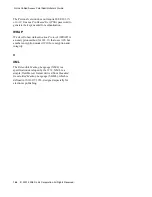
D-Link Unified Access Point Administrator’s Guide
160 © 2001-2008 D-Link Corporation. All Rights Reserved.
a translation table that maps all internal IP addresses
in outbound requests to its own address and converts
all inbound requests to the correct internal host.
NAT serves three main purposes: it provides security
by obscurity by hiding internal IP addresses, enables
the use of a wide range of internal IP addresses
without fear of conflict with the addresses used by
other organizations, and it allows the use of a single
Internet connection.
Network Address
See
IP Address
.
NIC
A Network Interface Card is an adapter or expansion
board inserted into a computer to provide a physical
connection to a network. Most NICs are designed for
a particular type of network, protocol, and media, for
example,
Ethernet
or wireless.
NTP
The Network Time Protocol assures accurate
synchronization of the system clocks in a network of
computers. NTP servers transmit Coordinated
Universal Time (UTC, also known as Greenwich
Mean Time) to their client systems. An NTP client
sends periodic time requests to servers, using the
returned time stamp to adjust its clock.
O
OSI
The Open Systems Interconnection (OSI) reference
model is a framework for network design. The OSI
model consists of seven layers:
•
Layer 1, the Physical layer, identifies the
physical medium used for communication
between nodes. In the case of wireless networks,
the physical medium is air, and radio frequency
(RF) waves are a components of the physical
layer.
•
Layer 2, the Data-Link layer, defines how data
for transmission will be structured and formatted,
along with low-level protocols for
communication and addressing. For example,
protocols such as
CSMA/CA
and components like
MAC
addresses, and
Frame
s are all defined and dealt
with as a part of the Data-Link layer.
•
Layer 3, the Network layer, defines the how to
determine the best path for information
traversing the network.
Packet
s and logical
IP
Address
es operate on the network layer.
•
Layer 4, the Transport layer, defines connection
oriented protocols such as
TCP
and
UDP
.
•
Layer 5, the Session layer, defines protocols for
initiating, maintaining, and ending
communication and transactions across the
network. Some common examples of protocols
that operate on this layer are network file system
(NFS) and structured query language (SQL).
Also part of this layer are communication flows
like single mode (device sends information
bulk), half-duplex mode (devices take turns
transmitting information in bulk), and full-
duplex mode (interactive, where devices transmit
and receive simultaneously).
•
Layer 6, the Presentation layer, defines how
information is presented to the application. It
includes meta-information about how to encrypt/
decrypt and compress/decompress the data.
JPEG and TIFF file formats are examples of
protocols at this layer.
•
Layer 7, the Application layer, includes protocols
like hypertext transfer protocol (
HTTP
), simple
mail transfer protocol (SMTP), and file transfer
protocol (FTP).
P
Packet
Data and media are transmitted among nodes on a
network in the form of packets. Data and multimedia
content is divided up and packaged into packets. A
packet includes a small chunk of the content to be
sent along with its destination address and sender
address. Packets are pushed out onto the network and

